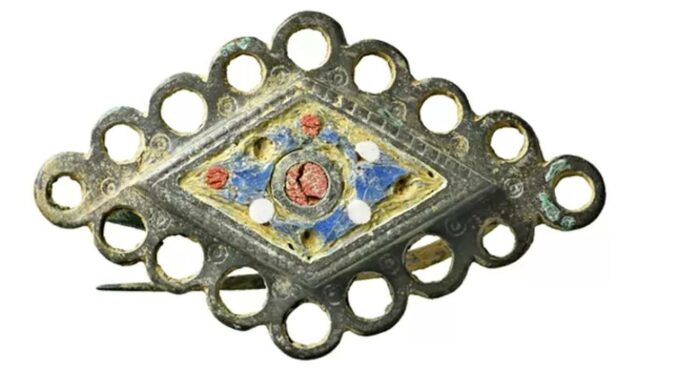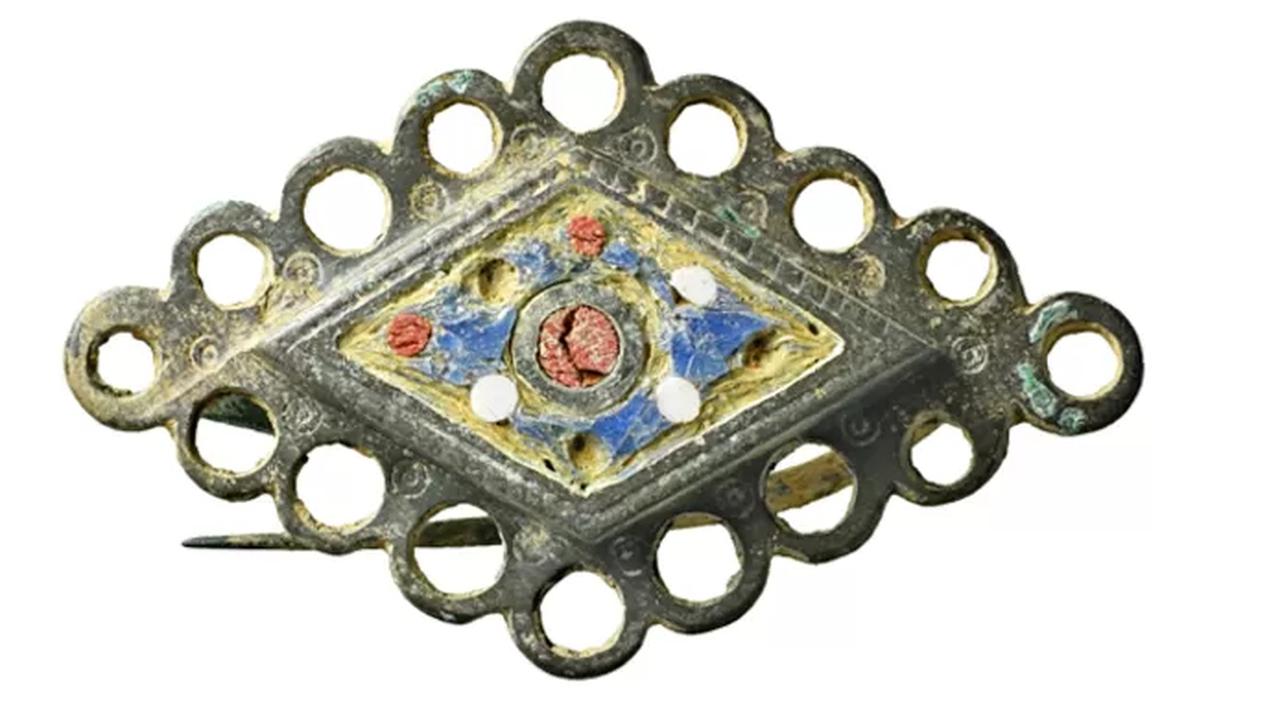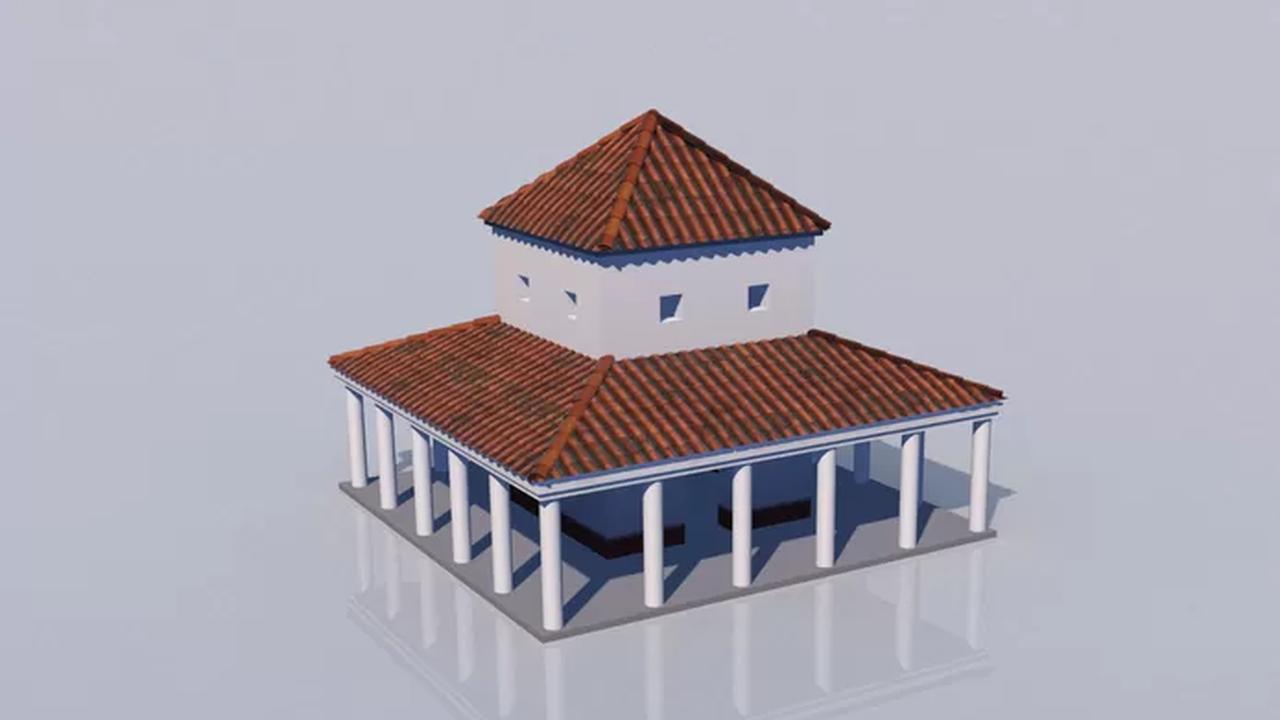
Unique Roman artifacts discovered in the Liemer clay
A top find for Western Europe. This is really unique. So flawless. The superlatives are not in the air when it comes to the discovery of a former Roman temple in the ground near Zevenaar. All thanks to volunteers from the area itself.
This article is from the Gelderlander. Every day a selection of the best articles from newspapers and magazines appears on NU.nl. there you read here more about.
He enjoys, beaming from one ear to the other. “This is so special.” Jos van Nistelrooij of the AWN Association of Volunteers in Archeology sees how cameras crowd to take images of coins, entire pillars and stones with inscriptions that have emerged from the ground in the Liemers. Thanks in part to him.
Because he was the volunteer who, six months ago, did some digging in a polder near Herwen on a site where clay is removed to make bricks. It was already known that there were Romans in Herwen, the Gelderland soil has been a treasure trove full of Roman finds for years. So he was sharp.
“I saw a 10-centimetre-thick pebble bed. It must have been placed there, I thought. Then I asked for help from the Cultural Heritage Agency. I knew there was something special to be found here.”
‘We already had a bite on the second day’
Further investigation followed, the Raap Archaeological Bureau was called in. “And it actually hit the spot right away. On the second day we already had a bite,” says Erik Verhelst of RAAP. After months of work, the entire construction of a Roman temple was uncovered.
“Here the Romans sacrificed from the first to the fourth century, so that their gods would favor them in the battles they engaged in. The temple, abandoned at one point, has been covered over the years by clay that has left the land. has been washed by dike breaches, historians suspected, but now everything has been uncovered again.”
Soldiers from Africa stationed on the Rhine
The find of the temple is special in itself, but even more so because of the many details that have been preserved. Stones with inscriptions, coins, pins. All still in good condition. “This makes it easy for us to discover who was stationed here, even soldiers from Africa, and which gods they worshipped.”
A cloak pin, presumably buried with one of the Romans

A cloak pin, presumably buried with one of the Romans
Photo: Cultural Heritage Agency
Fear that people will dig themselves
Roman altars, roof tiles, columns, statues of gods, the RAAP depots in Zutphen are now completely full of finds that are almost 2000 years old. Very special, thinks Van Nistelrooij, who was also allowed to help with the excavations. “That as a volunteer you find something that turns out to be important internationally. It’s all great.”
In recent months it has all been kept quiet to keep out ‘archaeological thieves’. Now that the site has been released to the brick maker, the big news can go out. However, the exact location remains unmentioned, for fear that people will start digging themselves.
This is what the temple at Herwen might have looked like. The construction as it was will be further investigated in the coming months.

This is what the temple at Herwen might have looked like. The construction as it was will be further investigated in the coming months.
Texts in the stones immediately explain
Because it is really special. Eric Norde of RAAP calls it ‘the find of my life’. He is lyrical. “It can’t get any crazier than this. You can only dream of this.” Yes, temples have also been found elsewhere, here on the border of the Roman Empire, the Limes. Like in Elst, where the foundations can still be seen.
“But so many utensils have been found here, so many details. We see in black and white – in texts in the stones – that the God Hercules Magusanus was worshiped here. In the coming years this will provide enormous insights into how things used to be in a Roman temple, everything has been preserved so well.”
Jasper de Bruin, curator at the National Museum of Antiquities, also confirms how special it is. When he visited the site earlier this year, he lost his mind. “We saw a table with statues, coins and pins that you rarely see together. For us there is no doubt how special that is.”
Roman tourism in Zevenaar?
On Monday, the question is immediately raised what this could mean for tourism. For Zevenaar it is again a special find in this part of the Limes.
But just like previous finds, the masterpieces will soon only be on display in the Valkhof Museum in Nijmegen, says Mayor of Zevenaar Lucien van Riswijk. “I have always championed a Roman amusement park. Maybe that should come after all. Because this is very special.”

Be the first to comment